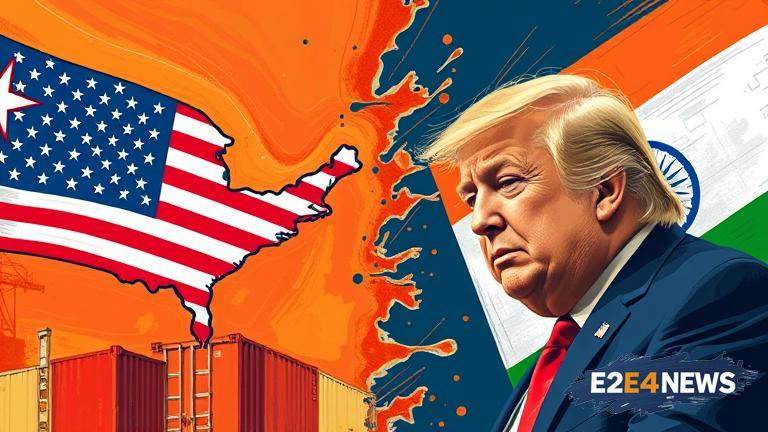The recent imposition of a 25% tariff on India by the US has sent shockwaves through the global trade community. According to economics expert Sansanwal, this move is a temporary negotiation tactic employed by the Trump administration to exert pressure on India to comply with US trade demands. The tariff hike is expected to have far-reaching consequences for both countries, with India’s exports to the US likely to be severely impacted. The move has been met with widespread criticism, with many experts warning that it could lead to a full-blown trade war between the two nations. Sansanwal, however, believes that the tariff hike is a short-term strategy aimed at bringing India to the negotiating table. The US has long been critical of India’s trade practices, citing concerns over market access and intellectual property protection. India, on the other hand, has accused the US of protectionism and unfair trade practices. The tariff hike is seen as a major escalation of the trade tensions between the two countries, which have been simmering for months. The US is India’s largest trading partner, and the tariff hike is expected to have a significant impact on India’s economy. India’s exports to the US include a wide range of products, such as textiles, pharmaceuticals, and IT services. The tariff hike is likely to make these products more expensive for US consumers, which could lead to a decline in demand. Sansanwal believes that the tariff hike is a negotiating tactic that will ultimately benefit the US, as it will force India to liberalize its trade policies and provide greater market access to US companies. However, other experts warn that the tariff hike could have unintended consequences, such as a decline in US investments in India and a weakening of the Indian economy. The Indian government has vowed to take retaliatory measures against the US, which could further escalate the trade tensions. The World Trade Organization (WTO) has also expressed concerns over the tariff hike, warning that it could undermine the global trading system. Despite the concerns, Sansanwal remains optimistic that the trade tensions between the US and India will be resolved through negotiations. He believes that the two countries have a long history of cooperation and that the current tensions are a temporary setback. The US and India have been engaged in trade talks for several months, and Sansanwal expects that the two countries will ultimately reach a mutually beneficial agreement. The agreement is likely to include concessions from both sides, with India agreeing to liberalize its trade policies and the US agreeing to reduce its tariffs. The trade tensions between the US and India are not limited to the tariff hike, with both countries having long-standing differences over trade issues. The US has been critical of India’s trade practices, citing concerns over market access, intellectual property protection, and trade barriers. India, on the other hand, has accused the US of protectionism and unfair trade practices. The trade tensions between the two countries have been escalating for months, with both sides engaging in a war of words over trade issues. Despite the tensions, Sansanwal believes that the US and India have a strong foundation for cooperation and that the current tensions are a temporary setback. The two countries have a long history of cooperation, with the US being one of India’s largest trading partners. The US is also one of the largest investors in India, with many US companies having a significant presence in the country. Sansanwal expects that the trade tensions between the US and India will be resolved through negotiations, with both countries ultimately reaching a mutually beneficial agreement. The agreement is likely to include concessions from both sides, with India agreeing to liberalize its trade policies and the US agreeing to reduce its tariffs. The resolution of the trade tensions will have significant implications for both countries, with the US and India being two of the world’s largest economies. The trade agreement is likely to boost trade between the two countries, with India’s exports to the US expected to increase significantly. The agreement is also likely to attract more US investments in India, with many US companies expected to take advantage of the liberalized trade policies. Overall, Sansanwal believes that the trade tensions between the US and India are a temporary setback and that the two countries will ultimately reach a mutually beneficial agreement. The agreement will have significant implications for both countries, with the US and India being two of the world’s largest economies.
